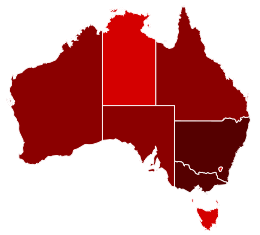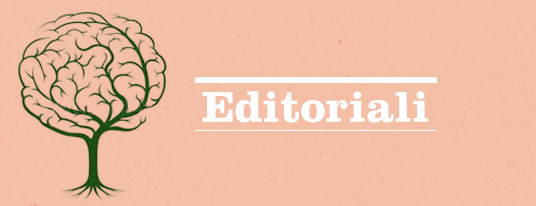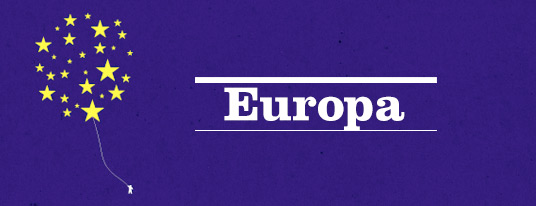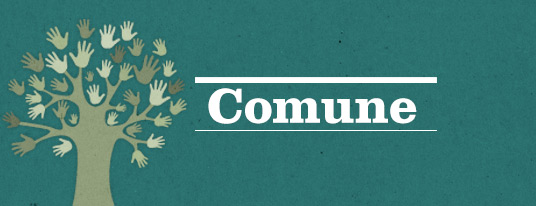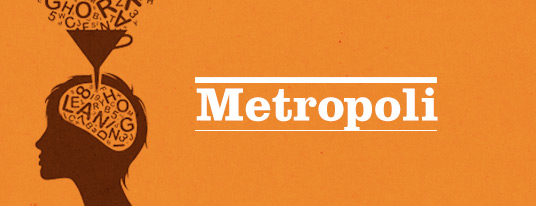By BRETT NEILSON
“You can kill the virus if you put the right measures in place.” These are the words of Mark McGowan, premier of Western Australia—the largest of Australia’s eight states and internal territories. Covering a landmass about the size of Western Europe, Western Australia did not record a single case of Covid-19 community transmission from April 11, 2020 to January 30, 2021. All positive tests in that period were among international travellers or close contacts of existing cases. Western Australia has pursued Covid measures both soft and hard: an initial soft lockdown of no more than a month, hard border closures, and in response to the recent infection of a quarantine hotel worker, a hard lockdown of five days. In Australia, states and territories have largely determined their own Covid responses, revealing them to hold statutory and legal powers that were less evident before the pandemic. The differing approaches of Australian states mean that their efforts are often weighed against each other, as well as those of nearby New Zealand. Assessing the centrality of border policies to these strategies offers a means to discern the extent to which they might function in other parts of the world and the degree to which they hinge on specific geographical, historical, and political circumstances.
Although Australia closed its international borders on March 20, 2020, and mandated two weeks of hotel quarantine for returning citizens and permanent residents, its internal states soon followed suit by closing their own borders. The result was an unprecedented situation in which for months travel between states was impossible. As lockdowns and other public health interventions eased the situation, these internal borders began to reopen and quarantine requirements were relaxed for travel from New Zealand to Australia. Flare-ups led again to the closure of internal borders but on a selective basis where certain states prevented or placed conditions on the entry of travellers from others. For instance, New South Wales closed its border to Victoria for over three months from July 2020 when viral spread resulting from the infection of an employee and privately contracted security guards working in a Melbourne quarantine hotel led to a 112-day lockdown. In December 2020, when Sydney experienced an outbreak, travellers from that state were unable to enter most others, although the stipulations varied over time: some states refused entry only to people from Sydney or certain hotspots; others required testing, quarantine, or self-isolation. The slightest move in reported Covid cases can now trigger border closures. For instance, when South Australia announced only three cases of community transmission in November 2020, Western Australia immediately closed its border to the state, requiring a period of 28 days with zero Covid cases before reopening. In January 2021, when New Zealand reported three cases of community transmission of the so-called South African Covid strain, Australia suspended quarantine-free travel but left it to states to decide what arrangements would apply to travellers who chose to fly anyway.
The situation regarding interstate travel in Australia has become confusing. Although there have been high profile contestations of internal border closures, including a constitutional challenge from a populist politician, the populace has generally complied. Western Australia, a state that has long harboured secessionist tendencies, has been the most prepared to erect borders. This state even divided its own territory into thirteen different regions and prevented movement between them for almost two months. Victoria has established a traffic light system that restricts entry based on the division of the rest of the country into red, orange, and green zones that follow no established political geography. The situation changes suddenly as health and travel directives shift with data inputs to epidemiological models. Newspapers publish guides detailing the possibility for mobility between destinations. Through the chaos, it is possible to discern a pattern. Less trafficked states have been more prepared to erect hard borders against others. The choice of New South Wales, the most populated state, to pursue softer lockdowns and keep the economy open has also contributed to this preparedness to institute hard borders.
Underlying this multiplication of internal borders is Australia’s international travel ban and border closure, which has remained a constant since March 2020. While the severity of lockdowns has varied across states, it is paradoxically from the system of hotel quarantine meant to insulate the country’s international border that the outbreaks that triggered these responses has spread. In many cases, it has been drivers, guards, or hotel workers employed on insecure and temporary contracts that have been the agents of infection. Governments and public health officials may have calibrated lockdowns to different situations but, whether by luck or calculation, they have ultimately delivered similar results. For an island-continent such as Australia, which nonetheless connects to the globe through busy international air routes, it is the hardness of border restrictions, probably more than the relative hardness of lockdowns in different states, that best characterizes the country’s efforts of pandemic control. In other words, regardless of whether states have pursued strategies of elimination or suppression, seeking to kill the virus or to live with it, the closure and control of borders has been the most consistent feature of the nation’s response.
Social debate about pandemic response in Australia has generally postured around positions on the hardness of lockdowns more than questions of border control. Leftist critics and centre left governments have generally favoured harder lockdowns, advocating the promotion of health and life above the economy, although these positions have been tempered by social criticism that emphasizes how lockdowns distribute risk based on access to care, food, money, and work. In the wake of the initial wave of lockdowns in March/April and with the possible exception of Victoria, states have chosen lockdown strategies that aim to stabilize the capitalist crisis resulting from the pandemic. In the instance of New South Wales’s December 2020 outbreak, these have been soft, geographically targeted measures. For other states, they have been hard but short responses to community-transmitted cases that have jumped the quarantine barrier.
The social debate on borders has fractured depending on which borders are under discussion. The federal government, for instance, has often criticized state border closures but has rigorously defended closure of the international border. Leftist criticism has tended to focus on the international border, although there are certainly left nationalist proponents of its hard closure. Addressed primarily to an international audience, this criticism has emphasized how the border closure exacerbates nationalist tendencies and reinforces epidemiological knowledge practices based on national classifications. However, these are not concerns for the vast majority of the population, who may experience frustration with border closures, particularly between states, but understand the shutting of the international border as a necessary preventative step.
As Wendy Brown (2020) notes, although the pandemic condition stems from the fact that microbes do not respect boundaries, border closures serve “the important political function of treating the virus as if it invaded us from the outside and acting as if we are meeting that threat with sovereign power.” Australia’s island geography and the measures taken since September 2013 to seal the country’s borders from irregular arrivals under the military-led initiative known as Operation Sovereign Borders have prepared its population to perceive the government’s control of borders as total and effective. If the maritime interdictions carried out under Operation Sovereign Borders were justified as “saving lives at sea,” the Covid border closure also presents itself as an exercise in saving lives, although this time the lives at stake are those of the population at large and not just those of undocumented migrants. Doubtless, the rigid migration policies of recent times have heightened popular expectations around the impenetrability of Australia’s borders, perpetuating a circular logic by which perceptions of effective border policing have reinforced and justified ever-greater investment in border securitization and vice versa. However, the political possibility to close borders derives not just from the sovereign prerogative on display in these migration control initiatives, or, in the case of Australian states, the precedent of constitutional exception to guaranteed internal movement to meet health emergency measures. Australia’s anxious and violent concern with its internal and external limits also stems from a long history of quarantine and border control that dates back to colonial times.
In Imperial Hygiene, Alison Bashford (2004) documents how the intersection of public health and spatialized biopolitical governance influenced the administration of colonial and/or national borders from the mid-nineteenth century on. She highlights “deep cultural as well as legal connections between quarantine measures and immigration restriction measures.” Recognizing that race, nation, and hygiene intertwine across many colonial and national settings in this period, Bashford locates the uniqueness of the Australian case in the simultaneity of the adoption of racial exclusions with the moment of nation-formation. The fact that racial exclusions were the defining act of the new nation, when the colonies became federated states in 1901, makes “the connections between racial hygiene, national hygiene and the constitution of a white civic body by exclusion (as well as selective inclusion) both formative and tight.”
Also relevant in this regard is Australia’s history as a settler colony based on the elimination and segregation of Indigenous peoples. There are myriad instances in which Aboriginal people were mustered, medically examined, carcerally detained in reserves or missions, or otherwise subjected to restricted mobility. As Bashford demonstrates, these measures were often enacted not through public health or criminal/penal legislation but through Aboriginal protection legislation. The resonance of this history in the present proliferation of internal borders is manifest, especially since Australia’s states have often announced border closures concurrently with restrictions or protocols governing travel to remote Indigenous communities. Although many Aboriginal land councils have requested the suspension of permits to enter their territories, governments have also limited access to Indigenous sites of habitation in the name of protecting Aboriginal people.
The mutations of what Bashford calls the “medico-legal border” (138) reverberate strongly in more contemporary accounts of Australia’s border and migration policies. For instance, Suvendrini Perera (2009) argues that quarantine arrangements have been central to the imagination of Australia as an “island of whiteness” created through Indigenous dispossession and migrant selection/exclusion. More pertinently, Sara Dehm (2020) explores the role of the “medical border” in both bolstering and undermining Australia’s immigration detention regime. She mentions the case of the so-called Medivac law, which before its repeal in October 2019 allowed for a period of less than seven months the evacuation to the mainland of internees in Australia’s offshore detention centres deemed to require medical care. Many of these migrants were accommodated in and remain confined to hotels, which function as makeshift detention centers and hauntingly recall the mandated hotel confinement of returned citizens and permanent residents—a kind of endless quarantine for subjects without Covid.
The case of international students, many of whom hail from China and India, also deserves mention. Since the closure of the international border, the government has consistently blocked the entry of these students into Australia in favour of the return of citizens and permanent residents. This has played havoc with university budgets, which since the 1990s have been dependent on international tuition fees in the face of successive government cuts. The situation has led to the dismissal of many university employees, who the government has also excluded from pandemic economic aid schemes that apply to other sectors. Those international students who remain have also been excluded from these schemes, because they are not citizens or permanent residents, leaving them unable to afford a ticket out of the country and forcing many into overcrowded accommodation and/or hunger.
Australia’s racial history rings through its current multicultural population profile in these instances of pandemic border control. Apart from the fact that these measures attribute the risk of infection to nationality and geography rather than finer-grained and potentially more accurate factors of susceptibility, the possibility to implement them is not free of geographical and historical contingencies, meaning they cannot easily be offered as transposable models to be applied elsewhere. In an essay called “Traveling Theory,” Edward Said (1983) details how political and social theories forged in emancipatory settings can have reactionary implications when transplanted to other parts of the world. We learn something similar from Jamie Peck and Nick Theodor’s Fast Policy (2015), which illustrates how a governmental initiative such as participatory budgeting, which had radical democratic implications when forged in Brazil’s Porto Alegre, further entrenched austerity economics when it arrived in New York City. Perhaps it is time to observe something similar about pandemic control measures. Whatever the merits of proposals to eliminate the virus in Europe, touting the determined actions of countries like Australia and New Zealand is a dangerous game of abstraction.
Doubtless, these claims are liable to reversal by those who argue that the presence of colonial and racial echoes is a small price to pay for the health of a nation. There is also the prospect of dissociating border closures from the perception of an outside threat. New Zealand’s Prime Minister has certainly cast her rhetoric in this direction, although she has also boasted that her country has the toughest border restrictions in the world. The point is neither to moralize about Covid border measures nor to suggest that the pandemic control records of Australia and New Zealand are purely an accident of geographical circumstance. Rather, this article aims to outline the geographical, historical, and political factors that have led these countries to implement hard border closures. The result of these choices is that while community transmission has tended toward zero, with the exception of outbreaks in Sydney and Melbourne, life has not returned to normal. Sure, schools are open, workplaces are welcoming employees back to their physical premises, and many people choose not to wear facemasks. Like life on the set of The Truman Show, people cannot see the shadow of their own anxiety as well as that of those around them. Everything seems fine until you approach the edge that undergirds the whole. Beyond that is a void, a no man’s land created by the political imagination that promotes its ability to set borders as the most effective means of protecting populations from a microbe with no respect for boundaries.
References
Bashford, Alison. 2004. Imperial Hygiene: A Critical History of Colonialism, Nationalism and Public Health. Houndmills: Palgrave Macmillan.
Brown, Wendy. 2020. “A Worldwide Mutual Pact.” The Drift, June 24. https://thedriftmag.com/a-worldwide-mutual-pact/.
Dehm, Sara. “The Entrenchment of the Medical Border in Pandemic Times.” Border Criminologies, July 15. https://www.law.ox.ac.uk/research-subject-groups/centre-criminology/centreborder-criminologies/blog/2020/07/entrenchment.
Peck, Jamie and Nik Theodore. 2015. Fast Policy: Experimental Statecraft at the Thresholds of Neoliberalism. Minneapolis: University of Minnesota Press.
Perera, Suvendrini. 2009. Australia and the Insular Imagination: Beaches, Borders, Boats and Bodies. Houndmills: Palgrave Macmillan.
Said, Edward. 1983. “Traveling Theory.” In The World, the Text, and the Critic, 226–247. Cambridge: Harvard University Press.
Questo articolo è stato pubblicato su Medico international il 2 febbraio 2021.

